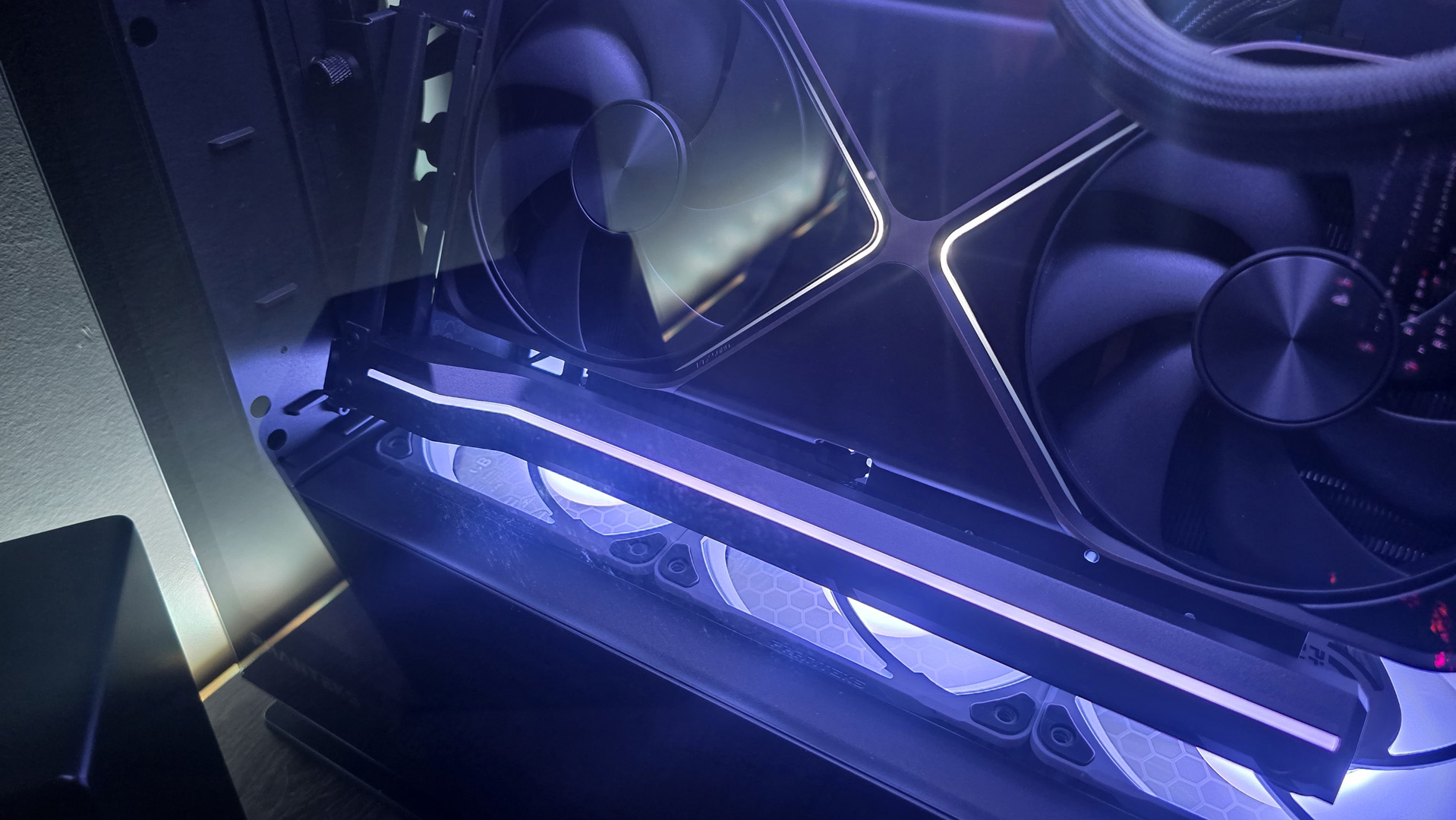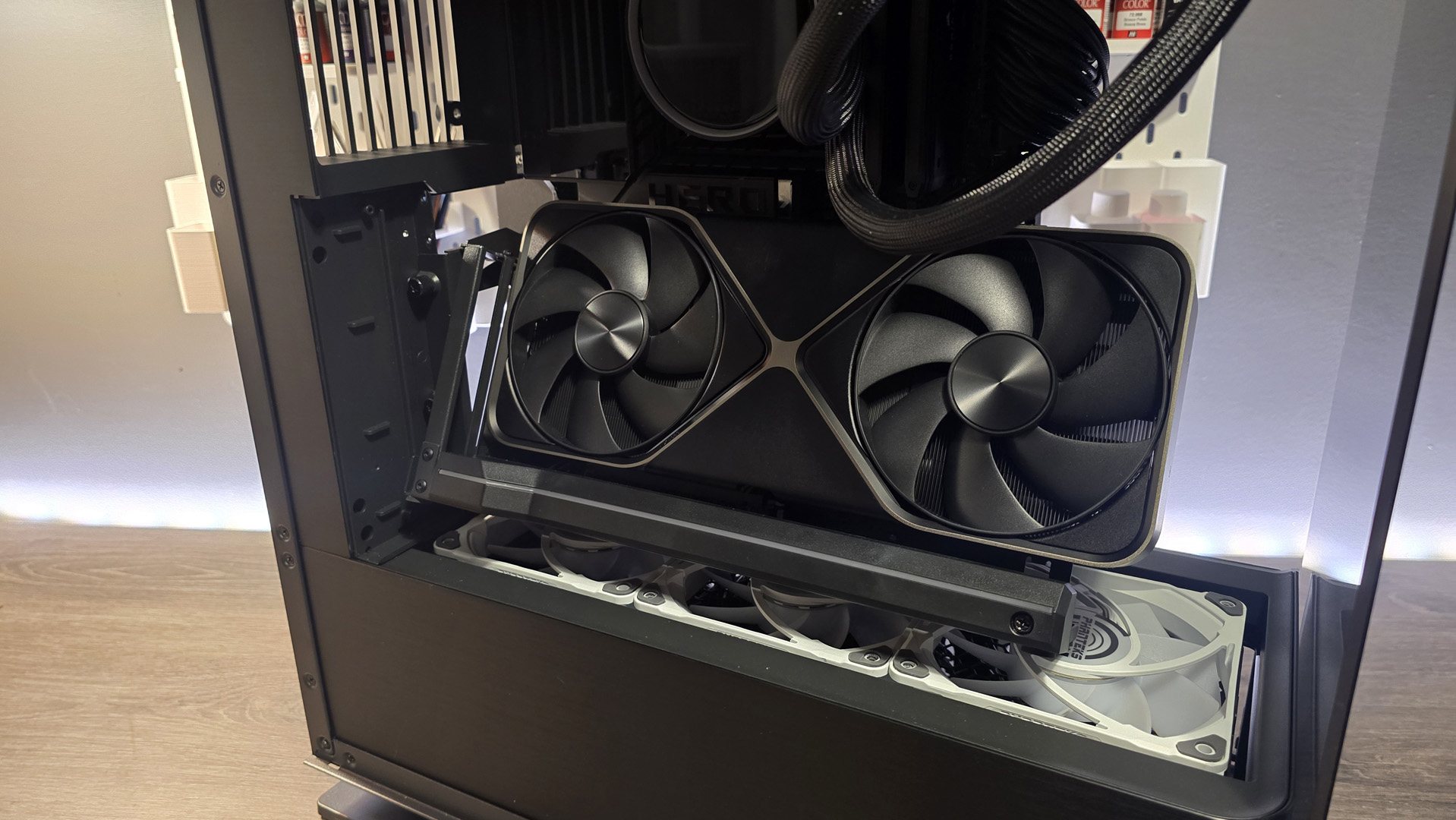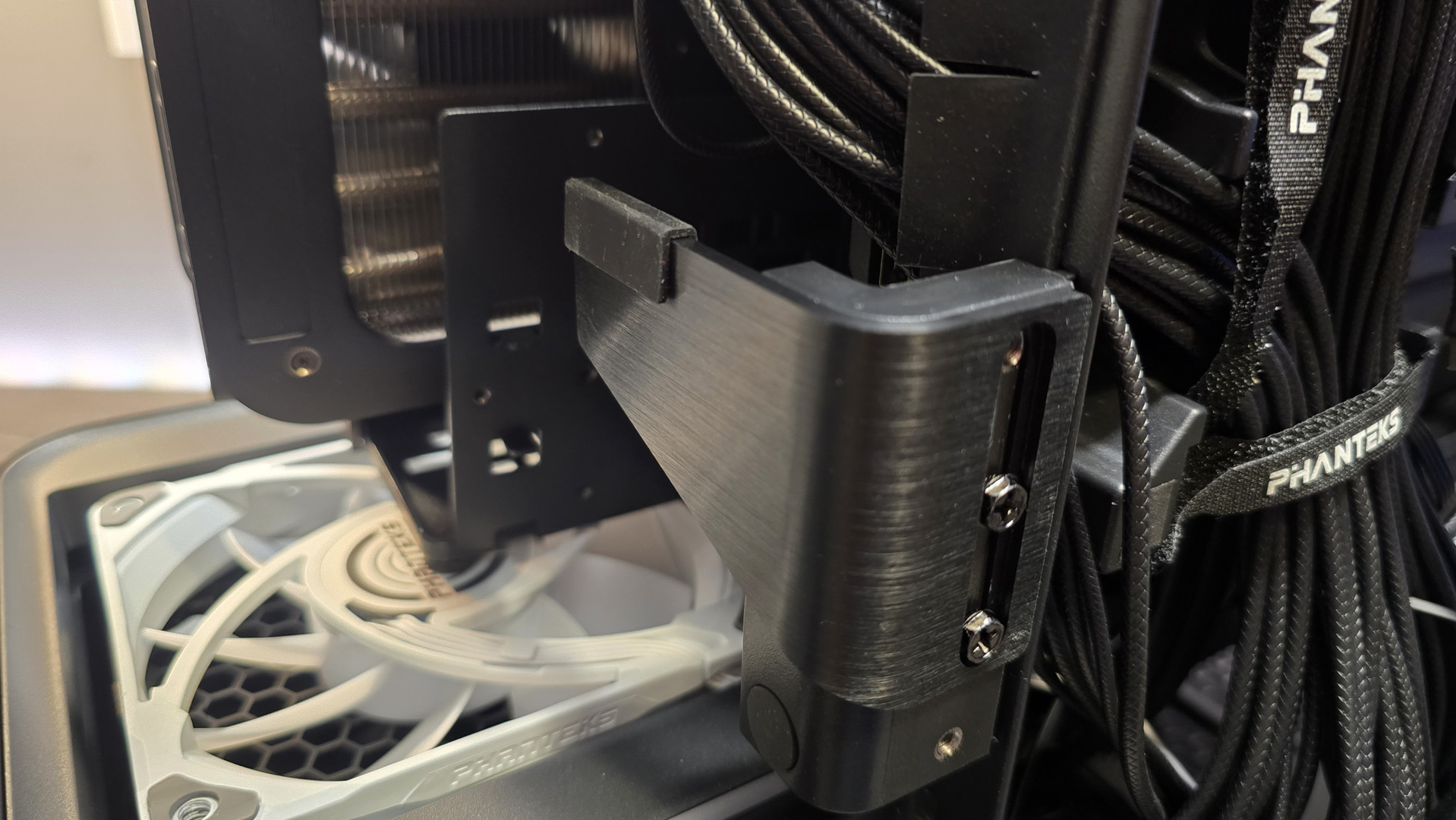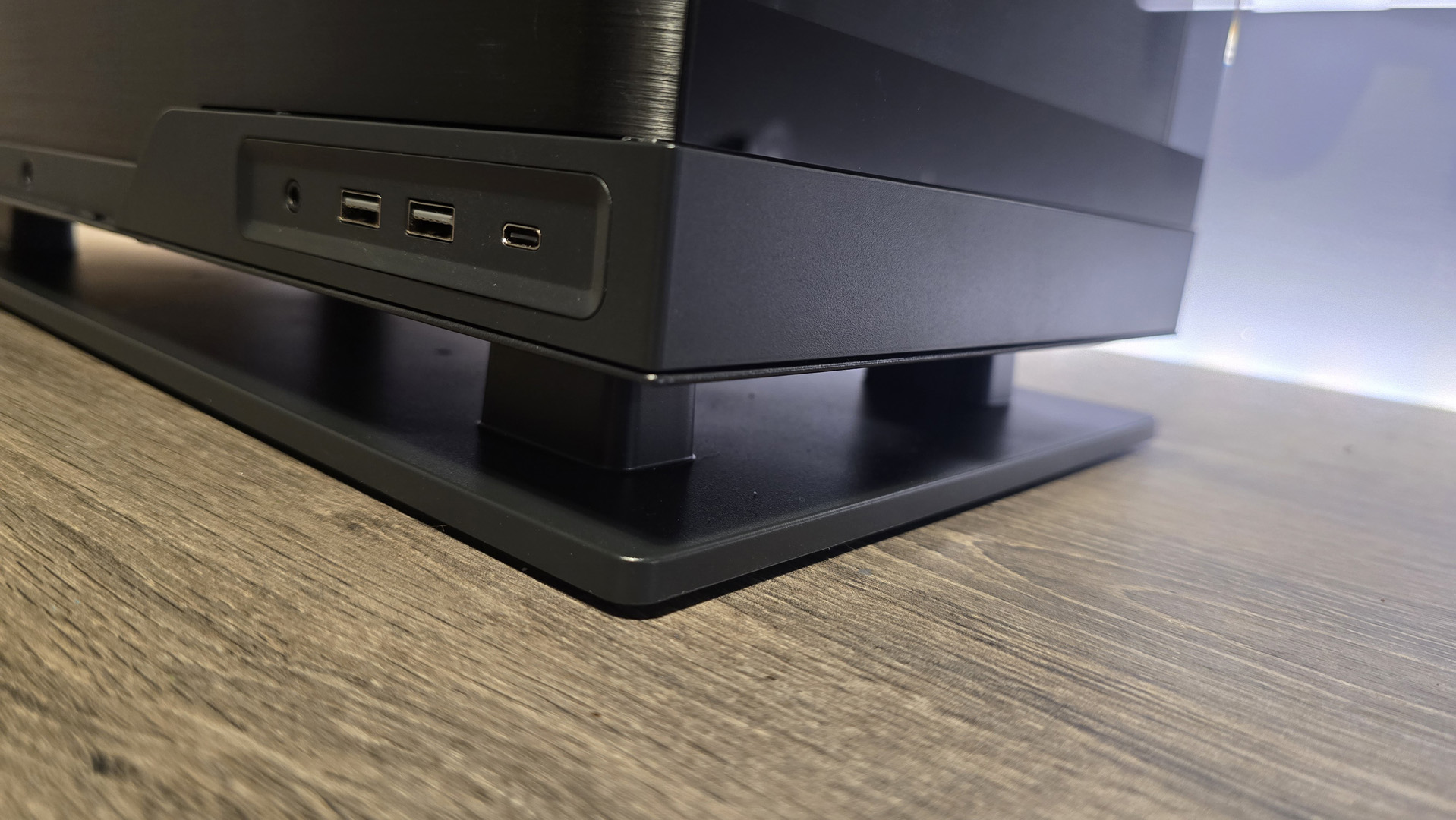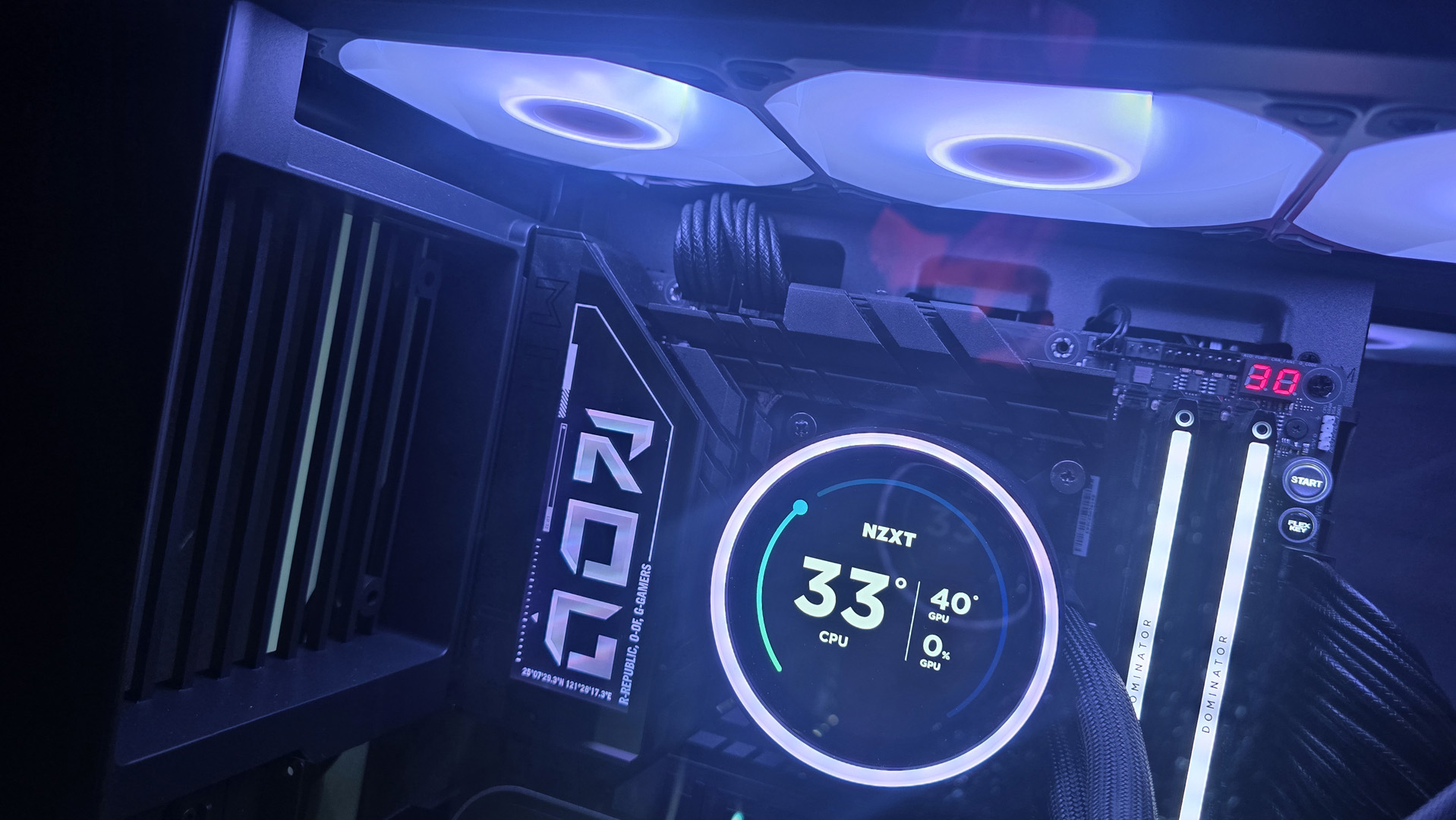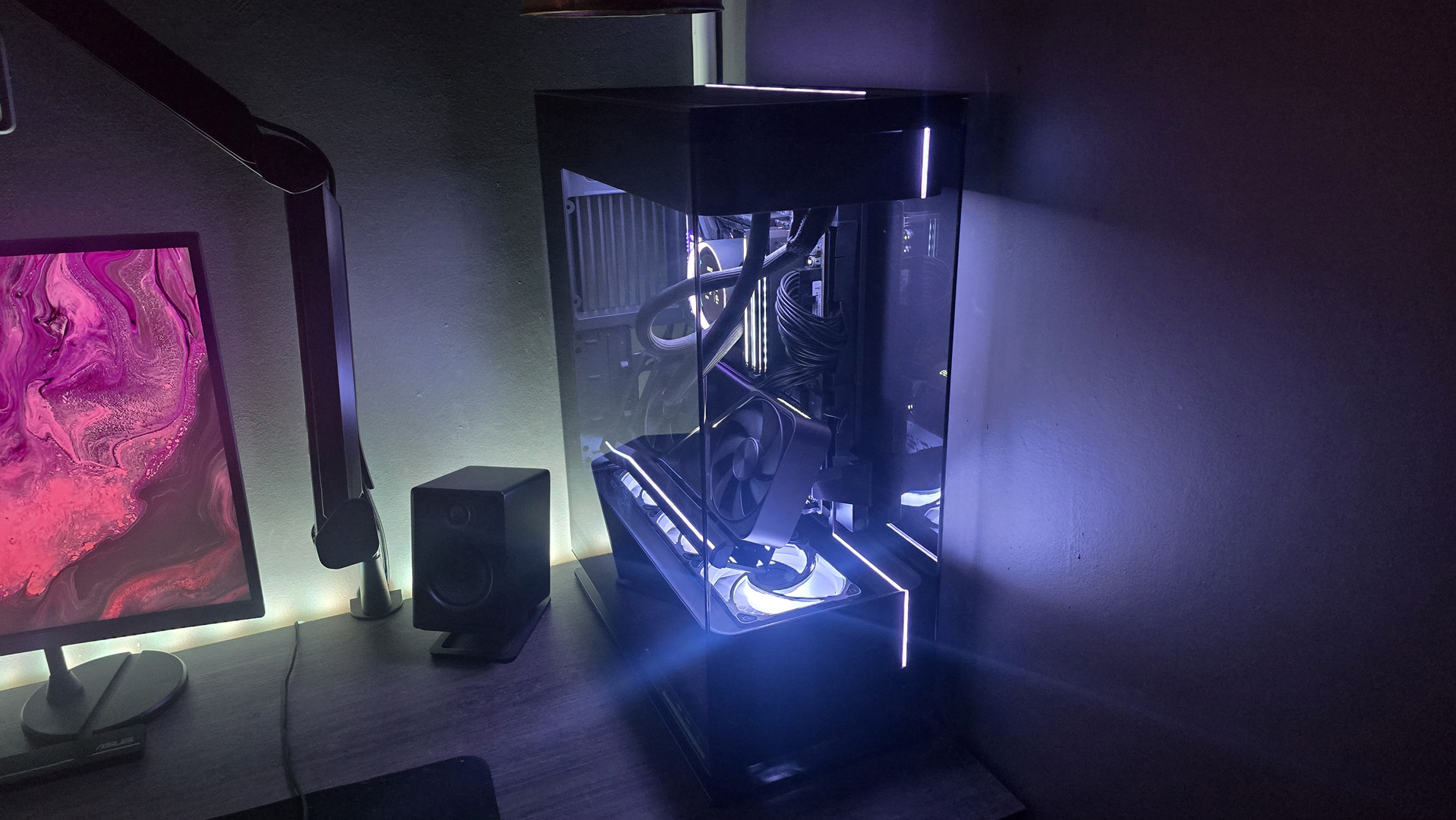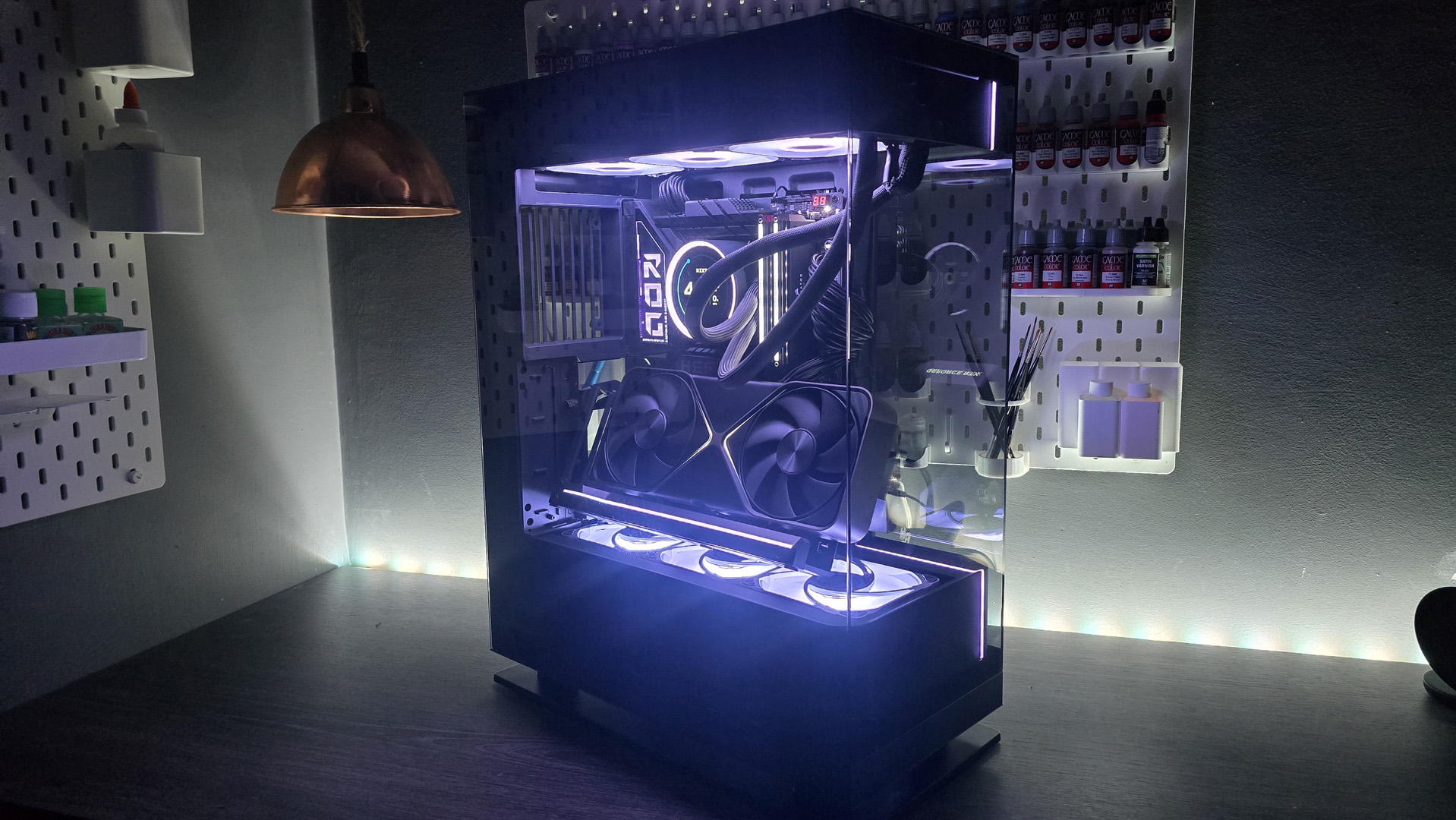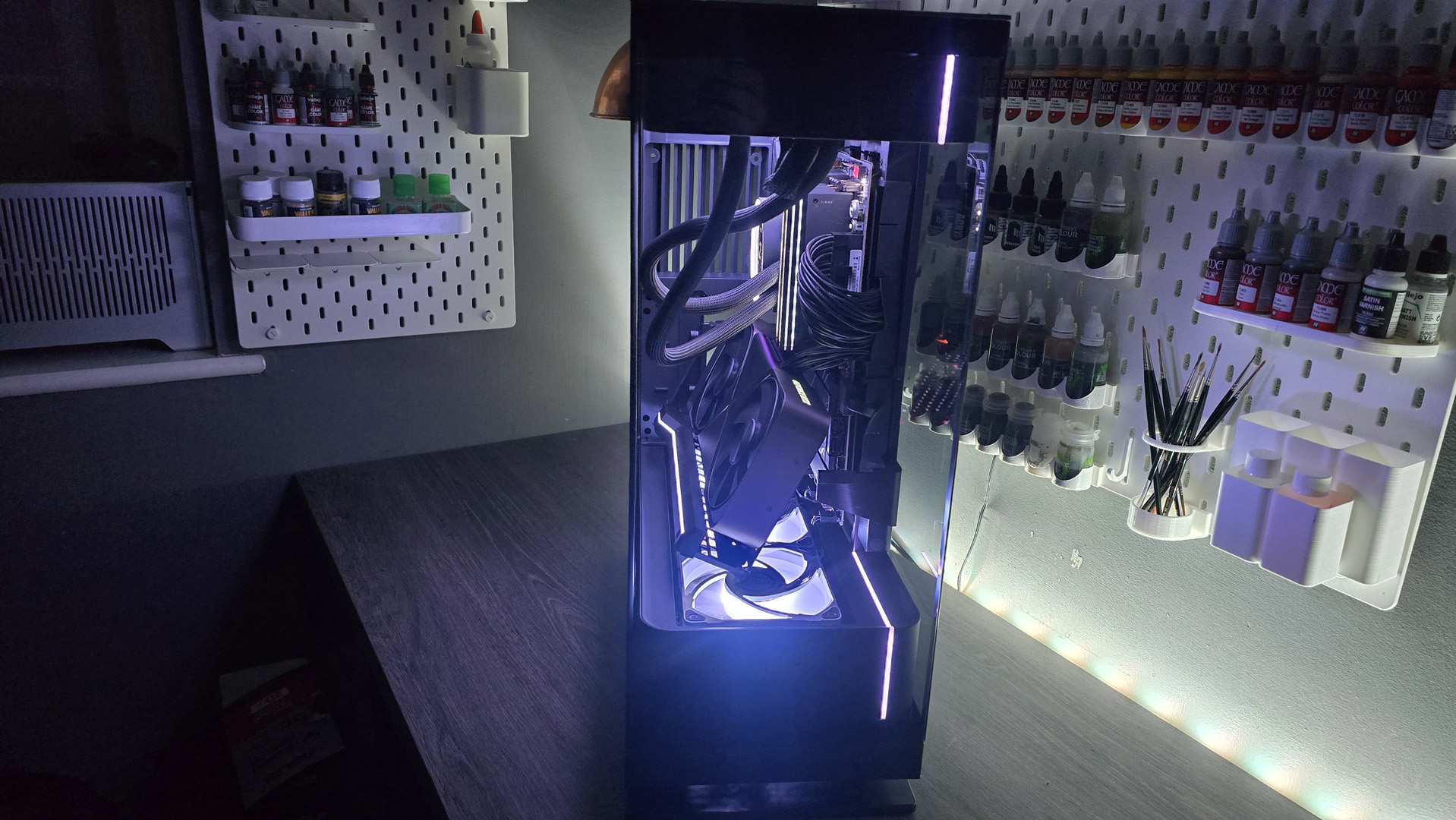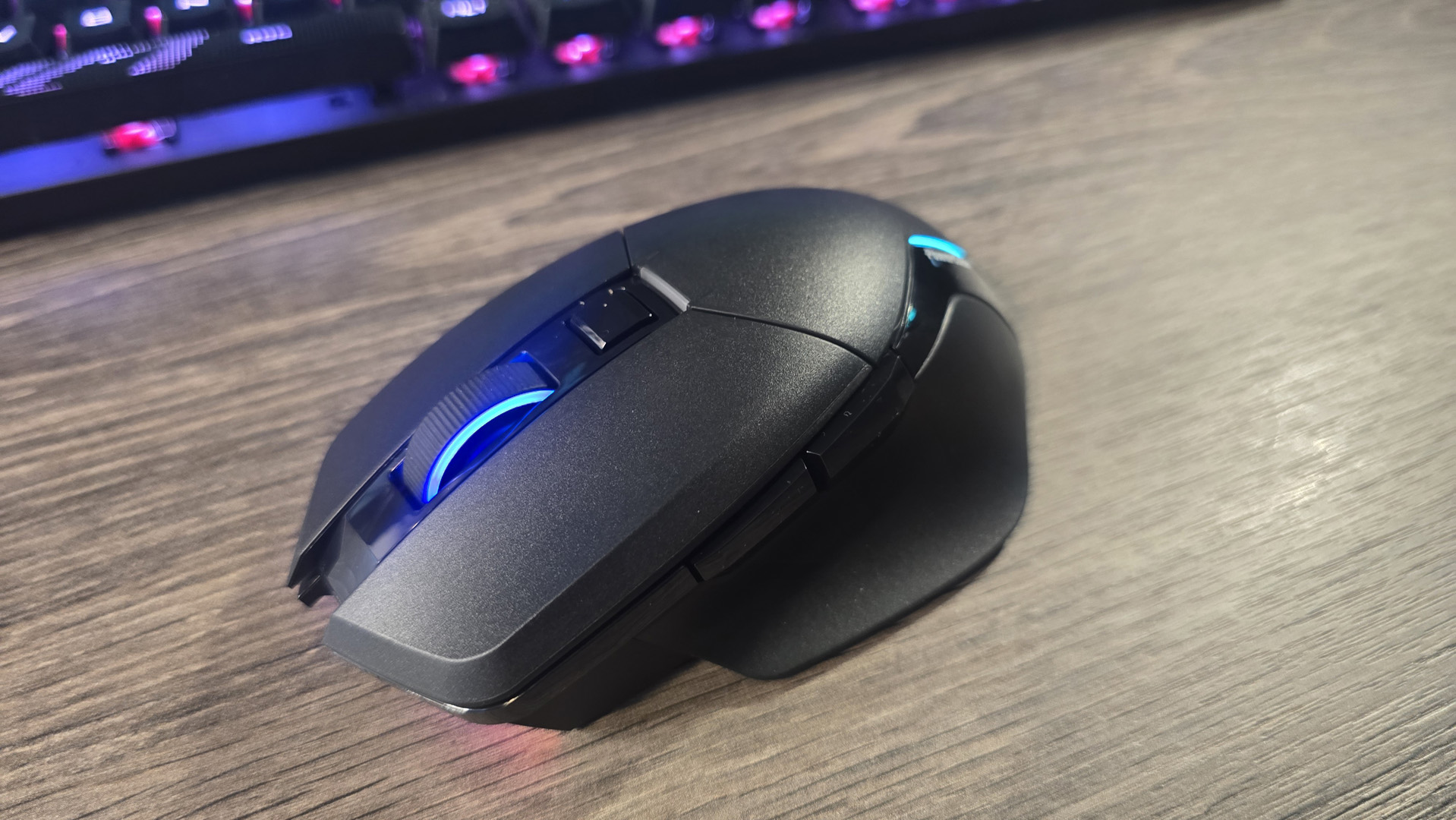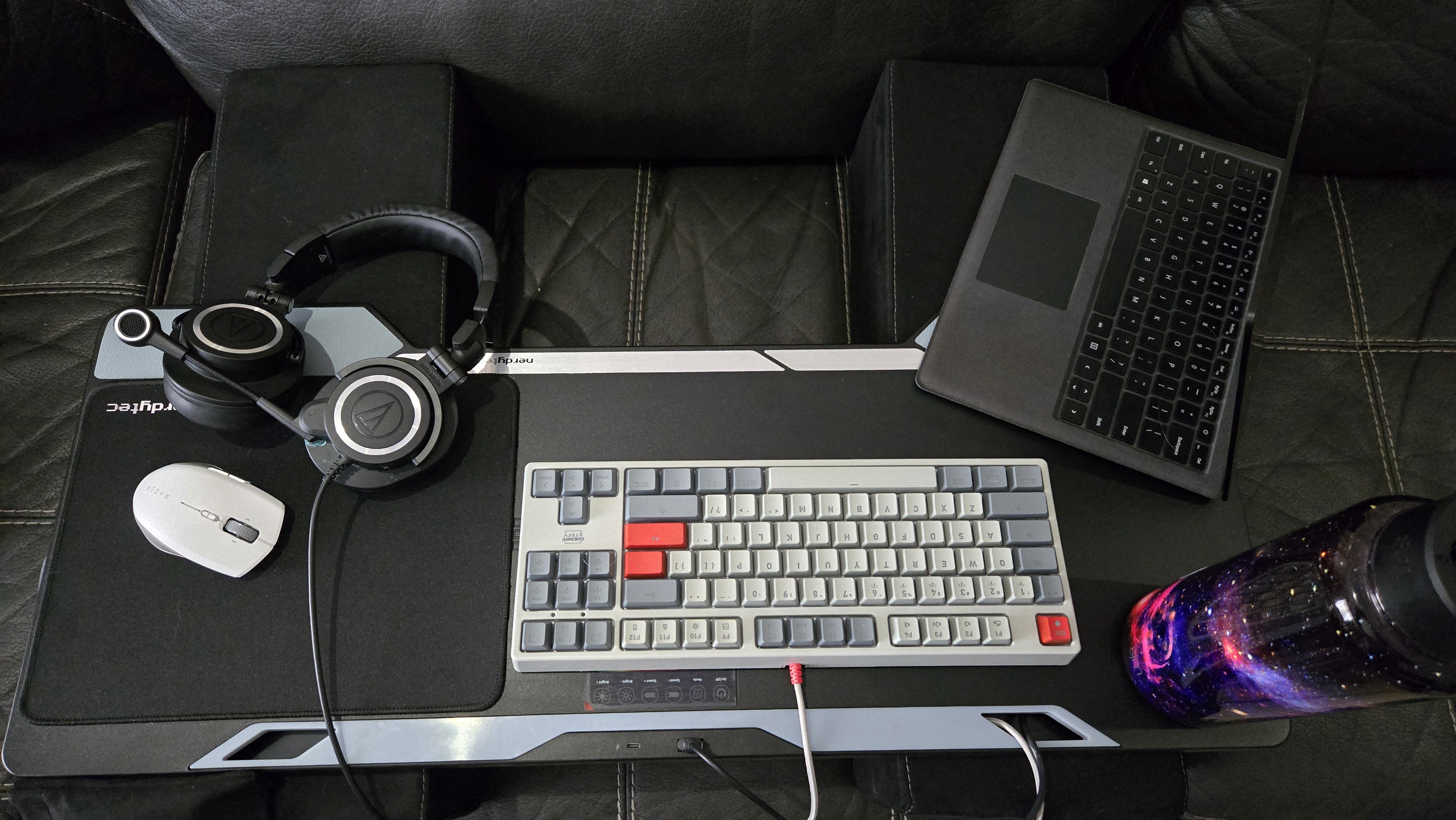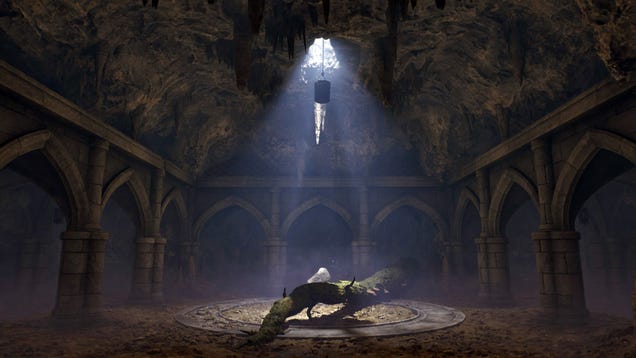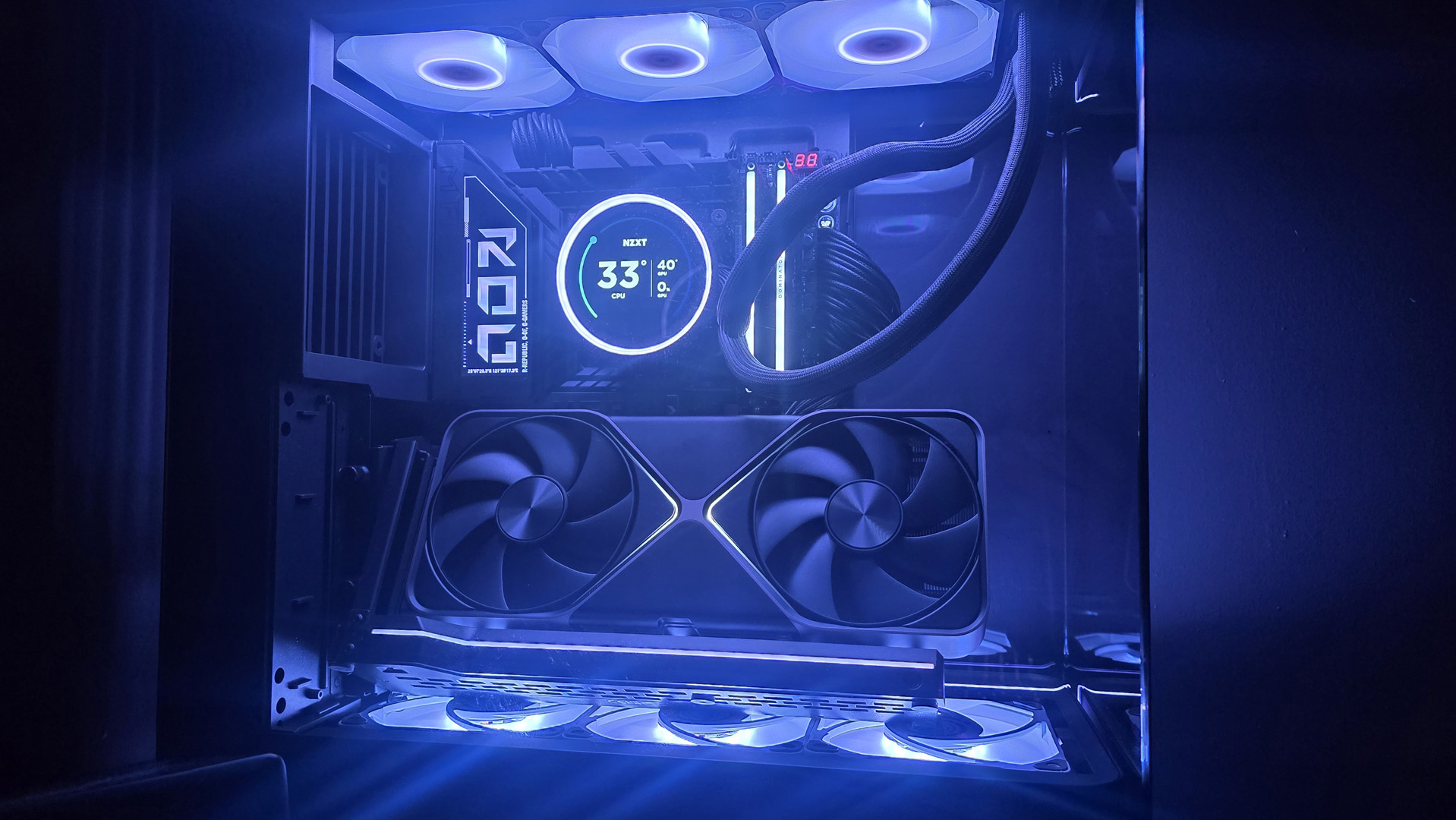
Monolithic, monstrous and beautiful, but at a cost.
It’s quite stunning how the case market has shifted in the last few years. With so many good chassis out there to choose from, it’s an incredibly difficult arena to break into. It’s not enough anymore to just update a black rectangular box with some RGB lighting, a few design tweaks and call it a day. You need something bold. Something audacious. Product lines that once were community icons, PC building staples, have had to be rebuilt from the ground up to even stand a chance. That’s something Phanteks has clearly taken to heart here with the Evolv X2.
With thick aluminum panels, a chunky mid-tower design, strong cooling support, and a real premium feel, the Evolv line has long been a cornerstone of Phanteks’ arsenal. It didn’t matter whether it was the original from way back in 2015, the TG, or the X; its shape and design were remarkably consistent generation on generation. In many ways incredibly similar to what Corsair has done with its 4000 series or NZXT has with its H7 Flow line. There was a familiarity to it for the longest time, and until the Evolv X2 rocked up, it felt like that was always going to be the case. But, oh boy, does this thing radically reimagine the feel of its namesake.
Long gone are those drive bays and hidden USB panels, sheets of thick aluminum, and angry, jutting, angular edges. And instead, we’re graced with this. Glass. Everywhere. There’s been a complete shift in the overall styling, of course inspired by the fishbowl trend currently gripping the community, with the likes of Lian Li’s O11 Vision Compact and others following in Hyte’s footsteps.
The cooling solution has also radically changed. Not only has Phanteks ditched the traditional front and side intakes entirely, opting for an absolute chimney design (with intakes in the floor and exhausts in the roof), but there’s radically deep radiator support here too, capable of supporting even the thickest of AIOs. It’s remarkably different from anything that’s come before it and a bold decision to make.
Form factor: ATX Mid Tower
Dimensions: 45.4 x 22.8 x 58.8 cm
Motherboard support: ITX, mATX, ATX, E-ATX (up to 280 mm) + Back connectors
Expansion slots: 8 horizontal
Front IO: 3.5 mm jack, 2x USB 3.0 Type-A, 1x USB 3.2 Gen2x2 Type-C, 1x Microphone/Headphone connector, Reset,
Total fan support: 7
Fan count: 3x 120 mm TOP; 1x 120 mm REAR; 3x 120 mm BOTTOM
Radiator support: Up to 360 mm (32mm thick) TOP~
Graphics card support: 380 mm length
Storage: 5x 2.5-inch (+ 1x 3.5-inch); 2x 3.5-inch (+3x 2.5-inch)
PSU support: ATX (up to 250 mm)
Weight: 14.2 kg
Price: $180, £134, €154
It’s not perfect; it has its flaws, and there are little tweaks here and there that could’ve really accelerated its lofty ascent to greatness, but for what it’s worth, in the key areas that count, the Evolv X2 is damn impressive, and with it, Phanteks is making a seriously good argument for this thing being one of the best PC cases of 2025.
Pricing is a little all over the place at the moment, dependent on where you’re picking this thing up. On the UK side, we’re talking about a relatively affordable £134. However, jump over the pond to the US, and it’s currently sitting pretty at $180, not including shipping (which seems to be a flat fee of $30 on top, no matter where you buy, potentially a slight tariff-dodging tactic), although do be aware, stock is limited right now, and the next batch may potentially be hit with some sort of a tariff hike anyway.
On first inspection there’s a lot to like here, even ignoring the wild and radical design Phanteks has leaned into. Yes, you do get three-sided glass panels and that monolithic stance that really sets it apart from its competition, but there’s more to it than that. A quick glance inside and you’ll notice a full-sized motherboard tray door to hide your unsightly cable management. There are intuitive Velcro straps lining the rear of the case, allowing you to easily tie everything down where you need to. It also has motherboard back connector support if you’re running one of those newfangled “cable-less” board setups, and there’s subtle integrated RGB lighting as well, all controlled via the motherboard headers.
There’s no fan controller or anything along those lines, and the material quality is generally very good. It’s mostly steel, glass, and plastic (stylized to look like brushed aluminum), but the overall feel of the thing is top-tier.
Cooling support is in a lot of ways quite antithetical. You’ve got that chimney-esque design, really leaning on convection and taking advantage of that, with your three intake fans situated above that PSU cover, plus the three in the roof as well acting as exhaust, and the additional 120 mm in the rear. The radiator bracket on top is relatively seamless to install and gives you this really clean look with all of your fans and radiators perfectly hidden by the paneling. Plus there’s a huge base and rise on the Evolv X2 as well, meaning even chucking this thing on a carpet, it’s going to have consistent access to cool air.
Yet it’s remarkably limited in what you can do with that cooling and entirely stipulated around a 360 mm AIO. For example, it’s got support for seven fans, but they all have to be 120 mm. You’ve got a really deep radiator and AIO cavity, but there’s only really support for a single 360 mm rad in the roof. There’s no fan controller by design, and those three intakes, despite leveraging the potency of convection, still have to pull air through a PSU shroud that’ll no doubt have an arsenal of cables stuck down there, plus your power supply and potentially hard drives as well.
It’s an impressive design and a beautiful concept, but it just needs a little bit more refinement and logic applied to it. Having the case slightly wider and slightly longer would potentially have allowed Phanteks to fit three 140 mm fans in the floor or offset those 120 mm intakes to the side so they have better access to cool air. Include a plastic bracket there too, and bam, you’ve got support for both 120 and 140 mm variants.

Test platform
CPU: Intel Core Ultra 7 265K | RAM: 32 GB (2×16 GB) Corsair Dominator Titanium DDR5 @ 7200 C34 | SSD: 4TB Samsung 9100 Pro M.2 PCIe 5.0 SSD | GPU: Nvidia GeForce RTX 5080 | Motherboard: Asus ROG Maximus Z890 Hero | CPU Cooler: NZXT Kraken Elite 360 RGB | PSU: 850W Phanteks Amp GH 80+ Gold
Moving onto cable management, and well, I broke the case on my first build, notably with that motherboard tray door. Ham-fisted perhaps, but it’s secured only by a small plastic tab or clip situated in the middle of the chassis right near the cable run for the 24-pin. Even with my best attempt at cable management, trying to shut the door fully wasn’t possible, and the plastic clip eventually snapped off entirely. There’s no other method of securing that metal door either, no magnets or anything of that ilk, so I had to push it in, then attach the glass panel, securing it in place with that instead. Cable management is generally quite tight back there; there’s not a huge amount of depth to it, and there’s limited support when it comes to the CPU power runs too.
✅ You want a beautiful hardware showcase: An outstanding design that sets it apart from the crowd. Chuck one of Phanteks angled GPU brackets in here, and the X2 looks beyond phenomenal.
❌ You want a more expansive cooling setup: Cooling is on the right path, but potentially obstructed airflow, and limited setup configurations means this is better suited to AIOs, and a dominant positive air pressure build.
Despite its flaws, this is one of the most beautiful cases I’ve ever had the pleasure of working in. I paired it with one of Phanteks Premium Vertical PCIe 4.0 Brackets, complete with RGB that allows you to tilt the GPU by up to 30 degrees (it’s not cheap, an additional extra at £85 / $110), but it just really completes the look. If I were building in it again, I’d opt for an AIO that lacked a breakout cable in the radiator itself and install a reverse blade 120 mm fan in that rear acting as an intake, just for peace of mind.
To be clear, the Evolv X2 is an absolute oddity. On the surface it looks remarkable. Complete a build in it, and you’ll have this megalomaniacal monolith of a system. It just looks otherworldly. It stands out from the crowd in an incredible way, but it’s not without its flaws. That cooling needs to be taken into consideration; you need to think heavily about your cable management and how you best take advantage of it, be willing to invest extra in brackets and fans, and be prepared to adjust your expectations on what reasonable temperatures should be for your system. If you can do that and can get by with that mild “form-over-function” vibe, then the X2 is an outstanding PC case and one you’ll be overjoyed with for many years to come. Now excuse me while I go transfer my system into it.

